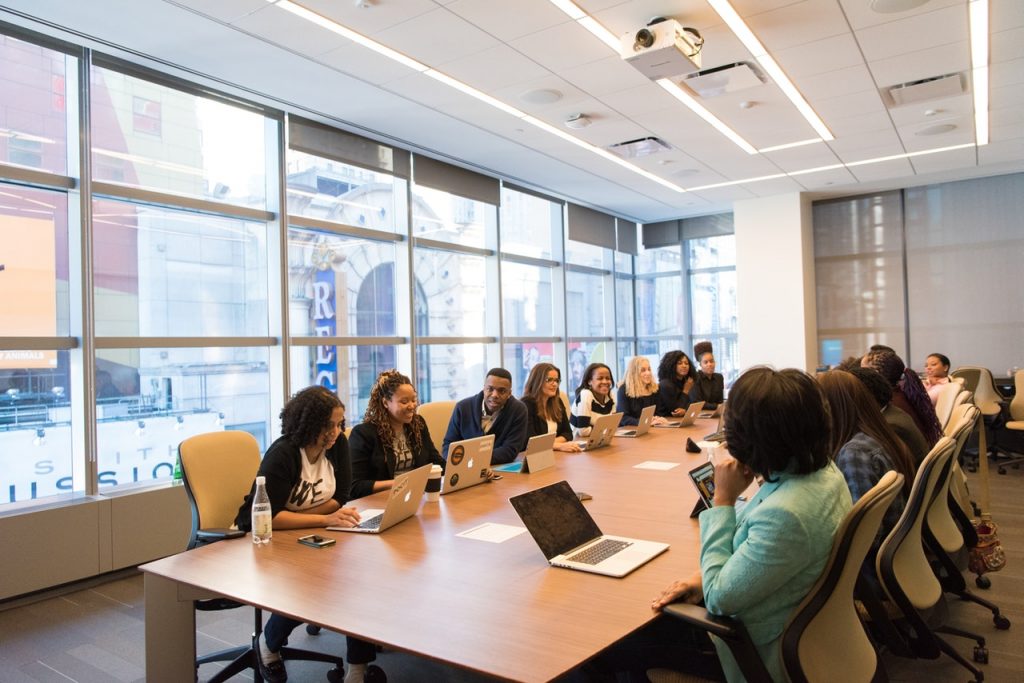The ultimate business packing guide
Every business owner should know that planning a move up front is the best way to make it quick and smooth, thus avoiding financial loss. Since packing is one of the most important aspects of commercial relocation, we have completed a brief but informative business packing guide to help you and your colleagues.

Packing material is of the utmost importance
Packing material is key for a successful office relocation. Without a lot of padding and durable boxes, you can say goodbye to breakable items. Long distance moves are particularly risky, so make sure you protect your goods properly. Many long distance moving companies Georgia and other southern states have sell their own packing supplies for business moves. Apart from purchasing, you can rent packing supplies or even get them for free. The basic supplies you cannot move without are:
- Boxes
- Packing paper
- Plastic wrap
- Tape
- Markers
Business packing step by step
1. Office decor
You should always start packing from the least used items. Since office decor isn’t really a necessity, this is a good place to start. You can begin packing office decorations as early as several weeks in advance. Before you automatically pack everything, consider what you want your new offices to look like. Thinking about office design will help your relocation a lot. By visualizing the new space, you’ll figure out what to do with the decorations. Some decorations will fit perfectly into the new space but not all of them. So, get rid of the items that won’t look good in the new offices.
Artwork
Pack framed pictures using packing paper and plastic wrap. The paper should be placed between the glass and the air bubbles. Also, remember to use special boxes designed for packing mirrors and fine art. If you have valuable artwork, we strongly recommend having professional fine art movers pack it. Furthermore, make sure you are covered in case of an accident. You should get suitable moving insurance for your artwork – paintings, sculptures, and other valuables. Basic moving insurance would not be enough to fix or replace damaged valuables such as artwork or electronics.
2. Documents
Take, recycle and shred – these are the three main categories for sorting your documents. You should recycle the files you no longer need. However, if they contain confidential information, shred them. Pack the documents you do want to keep in a file box after you organize them. Label the boxes by writing what’s in them and which department they belong to. You can move filing cabinets with the files inside. Just make sure they are locked. Keep the keys in a secure box or move them together with your personal belongings.

3. Desks
When it comes to preparing office desks for relocation, your employees can be of great help. For example, each of them can pack their own desk. This should be done on time, to make sure the desks are emptied before professional movers come to take them.
Decluttering is very important here. Start by getting rid of all the things you no longer need. These include useless items, such as paper clips, pens, markers and other office supplies that no longer serve their purpose.

First, pack your personal belongings. The items most of us have on our desks include photo frames, pencil holders, and mugs, which are usually breakable. When you pack fragile items, wrap them in packing paper or plastic wrap before putting them in a box. Employees should be in charge of moving their own personal belongings. You can pack loose office supplies like pens and paperclips into envelopes or small plastic bags. You can place all office supplies in one box. After you empty your desk, lock or tape shut all of its drawers.
4. Office equipment
No business packing guide would be complete without mentioning office equipment. First, get the items you no longer want or need out of the way. By donating to a registered charity, you can get a tax break! Also, remember to back up files. Keep your backup drive in a secure place, for example, a small lockbox. There is nothing worse than losing important information forever.
Office machines and other devices are extremely delicate and fragile, plus, they’re not cheap. Printers, copiers, and fax machines are some of the most expensive items in most offices. You need someone to disconnect, disassemble, pack and transport them with maximum care. Consider hiring professionals for this job. We suggest finding the most reputable local or cross country movers Atlanta offers with experience in commercial relocation.
Tips for DIY packing
- Cables and wires easily get tangled. So, take photos or label them before disconnecting and place them in separate plastic bags. This will help you put everything back where it was.
- Pack telephones together with the cords.
- Use original packaging to pack office equipment, such as PCs, printers, etc. In case you do not have the original boxes, purchase or rent extra-sturdy boxes. Getting used boxes from local supermarkets is fine for less sensitive and less valuable items but electronics should be transported in high-quality boxes.
- Secure the bottom of the boxes with tape. Next, put several layers of crumpled packing paper on the bottom.
- When packing computer towers, monitors, laptops, keyboards, and other accessories, wrap them in plastic wrap and secure it with tape. Place the larger items in the box first, then fill the empty space with smaller items and packing paper.
- The monitors and laptops should be placed on their edge, and the tower should stand upright.
- Finally, cover everything with more packing paper.
- If everything is packed tightly so that nothing moves, you’ve done your business packing right. All that’s left to do is tape the boxes shut and label them.

